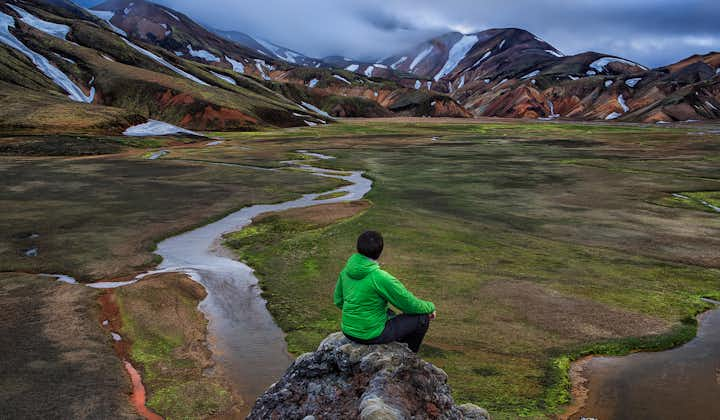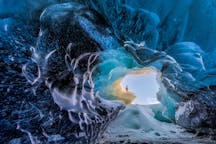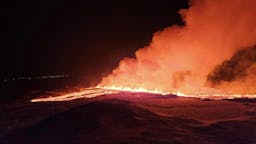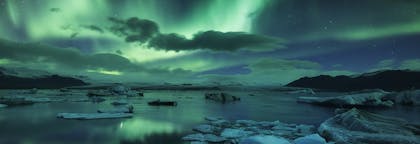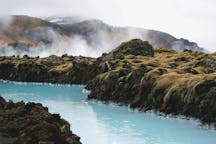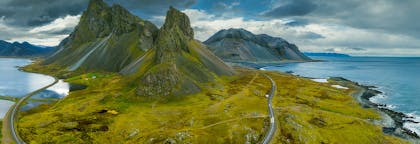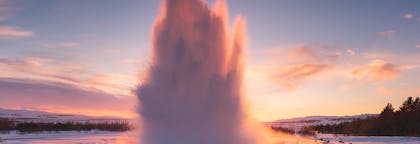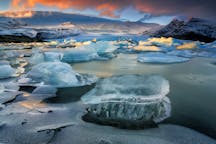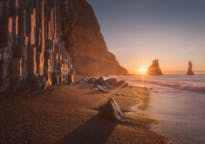Landmannalaugar-Superjeep-Tour mit Abholung von Reykjavik
Beschreibung
Zusammenfassung
Beschreibung
Entdecke auf dieser luxuriösen Superjeep-Tour eines der Naturjuwelen Islands, das Geothermalgebiet Landmannalaugar. Du wirst atemberaubende Wasserfälle und Kraterseen sehen, bevor du ein Bad in einem natürlich beheizten Pool nimmst. Diese Tour solltest du dir nicht entgehen lassen, wenn du das Beste der isländischen Natur erleben und gleichzeitig komfortabel und stilvoll reisen willst.
Landmannalaugar ist ein riesiges Gebiet von einzigartiger Schönheit im Herzen des südlichen Hochlands von Island. Eingebettet zwischen dem tiefschwarzen Lavafeld Laugahraun besteht Landmannalaugar aus windgepeitschten Rhyolithbergen, einer Art Vulkangestein, das ein ganzes Spektrum an schillernden Farben an den Berghängen erzeugt.
Dein Abenteuer beginnt in Reykjavík, wo du am Morgen von einem Superjeep abgeholt wirst. Dieses große und luxuriöse Fahrzeug wurde speziell dafür gebaut, um abseits der ausgetretenen Pfade in Gegenden zu fahren, die mit normalen Bussen nicht erreichbar sind, sodass du ein exklusives und einzigartiges Erlebnis haben wirst, wenn du das isländische Hochland durchquerst.
Dein erster Halt des Tages ist im Tal Þjórsárdalur, wo du den Wasserfall Hjálparfoss findest. Der Hjálparfoss befindet sich im Lavafeld nördlich des Stratovulkans Hekla und ist ein Zwillingswasserfall, bei dem zwei Bäche des Flusses Fossá im Becken des Wasserfalls zusammenfließen.
Auf dem Weg vom schönen Wasserfall hältst du an zwei malerischen Seen, bevor du Landmannalaugar erreichst. Der erste See ist der Ljótipollur, ein Kratersee mit hohen Ufern in einem unglaublichen Rotton, der einen Kontrast zum azurblauen Wasser bildet. Der zweite See ist der Frostaðavatn, ein großer und schöner See, der bei Fotografen auf der ganzen Welt beliebt ist.
Die Rhyolithberge in Landmannalaugar erscheinen in Rot-, Rosa-, Grün- und Goldgelb-Tönen und verleihen der ganzen Gegend einen Hauch von Jenseits. Du hast die Möglichkeit, einen der vielen Wege in der Gegend zu erklimmen, bevor du ein Bad im natürlich beheizten geothermischen Pool nimmst, um dich nach einem Tag voller Reisen zu entspannen.
Bevor du zurück in die Stadt fährst, machst du noch einen kurzen Halt im Tal Dómadalur, wo du den Wasserfall Þjófafoss findest. Du wirst für den Superjeep dankbar sein, denn er ist eines der wenigen Fahrzeuge, die den Weg zu diesem wunderschönen Wasserfall problemlos bewältigen können. Du wirst auch den herrlichen Vulkan Hekla besuchen, einen der aktivsten Vulkane Islands.
Verpasse nicht diese einmalige Gelegenheit, die geothermischen und vulkanischen Landschaften des isländischen Hochlands zu bereisen. Auf dieser exklusiven Superjeep-Tour siehst du Gegenden, die nicht viele besuchen. Überprüfe die Verfügbarkeit, indem du ein Datum auswählst.
Inklusive
Aktivitäten
Was du mitbringen solltest
Gut zu wissen
Du hältst in Landmannalaugar für 3 Stunden an. In der Gegend gibt es mehrere Wandermöglichkeiten: Die beliebteste ist Laugahraun, während fortgeschrittene Wanderer Blahnukur, Brennisteinsalda und Sudurnamur genießen können.
Video
Geprüfte Rezensionen
Ähnliche Touren

Lade Islands größten Reisemarktplatz auf dein Handy herunter, um deine gesamte Reise an einem Ort zu verwalten
Scanne diesen QR-Code mit der Kamera deines Handys und klicke auf den angezeigten Link, um Islands größten Reisemarktplatz in deine Tasche zu laden. Füge deine Telefonnummer oder E-Mail-Adresse hinzu, um eine SMS oder E-Mail mit dem Download-Link zu erhalten.
